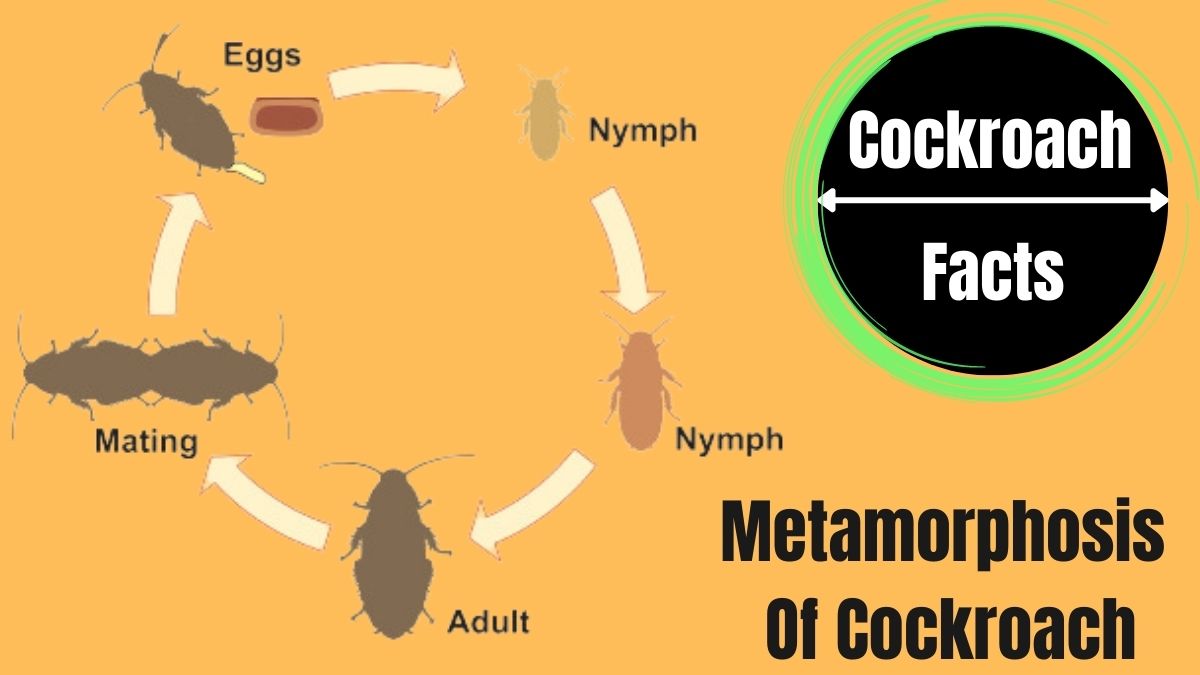The metamorphosis of a cockroach is a fascinating process that involves a series of physical changes and behavioral adaptations. These changes allow the cockroach to develop from an egg into an adult, with each stage serving a specific purpose in the insect’s life cycle. In this article, we will explore the metamorphosis of a cockroach, including its different stages, behaviors, and adaptations.
Introduction
Definition of metamorphosis
Metamorphosis refers to the process of transformation or development that occurs in insects as they grow from one life stage to another. In insects, metamorphosis can be complete or incomplete, depending on the degree of physical changes that occur.
Purpose of metamorphosis
The purpose of metamorphosis is to enable insects to adapt to different environmental conditions and to optimize their survival and reproductive success. Different life stages provide different advantages in terms of feeding, growth, and reproduction, allowing insects to exploit diverse ecological niches.
Overview of the Metamorphosis of a Cockroach
Cockroaches are insects that undergo incomplete metamorphosis, meaning that they do not have a pupal stage like insects with complete metamorphosis (e.g., butterflies). Instead, they hatch from eggs as nymphs, which resemble smaller versions of adults. Nymphs molt several times before reaching adulthood, during which they gradually acquire the physical characteristics and behaviors necessary for survival and reproduction.
Egg Stage
Description of eggs
Cockroach eggs are small, oval-shaped, and brown or black in color. They are enclosed in a protective casing called an ootheca, which is produced by the female’s reproductive system. The ootheca can contain up to 50 eggs, depending on the species.
Egg-laying behavior
Cockroach females typically lay their eggs in dark, protected areas such as crevices, cracks, and other sheltered locations. They use their ovipositor to deposit the ootheca, which is then glued in place using a sticky substance secreted by the female’s reproductive system.
Incubation period
The incubation period for cockroach eggs varies depending on the species and environmental conditions. In general, it takes between 40 and 60 days for the eggs to hatch.
Hatching
When the eggs hatch, they release nymphs that resemble smaller versions of adults. The nymphs are typically white or light brown in color and have soft exoskeletons. They are not yet capable of reproduction and must undergo several molts before reaching adulthood.
Nymph Stage
Physical characteristics
Nymphs have similar physical characteristics to adults, but are smaller and lack wings. They have six legs, a pair of antennae, and a segmented body. As they molt and grow, their exoskeletons become harder and darker in color.
Diet and feeding behavior
Nymphs are omnivorous, meaning that they feed on both plant and animal matter. They are opportunistic feeders and will consume whatever food sources are available in their environment. Common food sources for cockroach nymphs include decaying organic matter, plant materials, and small insects.
Molting process
Cockroach nymphs must undergo several molts before reaching adulthood. During each molt, the nymph sheds its exoskeleton and replaces it with a new, larger one. The process of molting is controlled by hormonal signals and requires significant energy and resources.
Reproductive behavior
Nymphs are not yet capable of reproduction and do not exhibit reproductive behaviors. Instead, they focus on growth and development, building up the energy reserves and physical adaptations necessary for survival in the adult stage.
Adult Stage
Physical characteristics
Adult cockroaches have fully developed wings, allowing them to fly or glide short distances. They also have hard, dark exoskeletons that protect them from predators and environmental stressors. Cockroaches have six legs, a pair of antennae, and a segmented body.
Diet and feeding behavior
Adult cockroaches are also omnivorous and will feed on a variety of food sources. They are nocturnal and prefer to feed at night when it is dark and they are less likely to be detected. Common food sources for adult cockroaches include decaying organic matter, starchy foods, and sweet foods.
Reproductive behavior
Adult cockroaches are capable of reproduction and exhibit a range of behaviors related to mating and egg-laying. Male cockroaches will often engage in courtship displays to attract females, including emitting pheromones and performing physical displays. Females lay their eggs in protected locations, often using their ovipositor to deposit the eggs in crevices or other sheltered areas.
Adaptations for survival
Cockroaches have a range of adaptations that allow them to survive in diverse environments. For example, they are able to tolerate extreme temperatures and can survive in both hot and cold climates. They are also able to go long periods without food or water, and can survive in areas with limited resources.
Conclusion
Importance of cockroaches
Cockroaches play an important role in many ecosystems, serving as decomposers and scavengers. They are also important model organisms for studying insect behavior and physiology.
Implications of metamorphosis
The metamorphosis of cockroaches provides important insights into the developmental processes of insects and the mechanisms that enable them to adapt to different environments.
Future research directions
Future research on the metamorphosis of cockroaches could explore the genetic and molecular mechanisms underlying developmental processes, as well as the ecological and environmental factors that influence metamorphosis and adaptation in insects.

